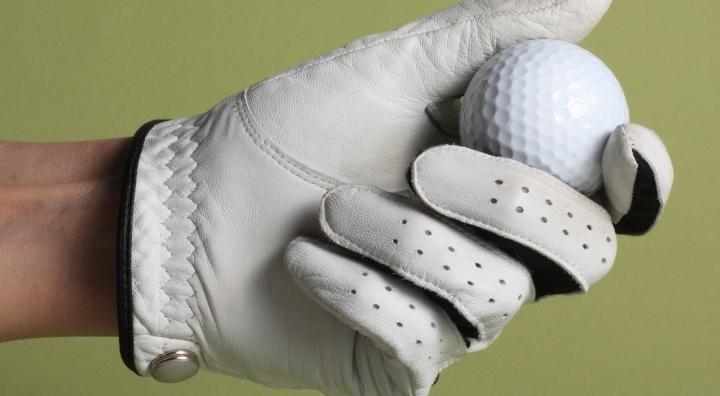Best Golf Strategy for High Handicappers


Golf is a game that can be enjoyed by anyone, no matter what their skill level. However, the high handicappers will have to work much harder for those strokes and putts. That means they need to find out which golf strategy works best for them.
However, if you’re a high handicapper, don’t despair. You can still improve your golf game by following a few simple strategies. In this article, we’ll discuss some of the best ways to lower your handicap and play better golf. We’ll also provide tips for improving your swing and putting skills. So read on for the best golf advice for high handicappers!
1. Consider Your Handicap When Selecting Clubs

One of the most common mistakes high handicappers make is using a club that’s too much for their ability.
If you are a high handicapper, you should choose golf clubs that will help you to hit the ball further. This can be done by choosing clubs with a larger head, like the driver or the 3-wood. You should also choose clubs that are easier to hit, like the 5-iron or the 7-iron. As for driver head size, the bigger the better. For iron heads, you should choose one that is larger than your normal irons.
The reason clubs with large heads help high handicappers hit the ball further is because they have a larger sweet spot. The sweet spot is found at the center of the clubface and it’s where an off-center hit will produce a shot that is straight and at the maximum velocity. When you make an off-centered hit, the ball will travel in a less powerful direction. But when you make a centered hit at the sweet spot, your ball’s power increases dramatically.
If you’re having issues with your short irons, perhaps going down an iron would help you out on the course. Or if you’re losing too many balls on longer tee shots, switch to something harder but more forgiving like an 8-wood or 9-wood off the tee. A good golf shop employee may be able to recommend what clubs are best suited for your game - just clearly explain what trouble areas you have on the course so they can help get you started.
2. Focus on Your Practice Swings
One way to improve your golf game, especially if you are a high handicapper, is to focus on your practice swings.
A practice swing is a golf swing you take without a ball. It’s a way to warm up and get comfortable with your swing before you hit the ball. You can also use it to experiment with new swings or techniques without risking a golf shot.
Some golfers also use practice swings as a way to calm down before they hit the ball. If you’re feeling nervous or tense, taking a few practice swings can help you relax and focus on your next shot.
When you are taking practice swings, make sure that you are taking your time and focusing on your form. You should also make sure that you are using the same swing each time, so that you can start to develop muscle memory. Try to avoid rushing through your practice swings, as this can lead to bad habits.
3. Use a Golf Ball with Lower Spin for Less Distance and More Control
One way that a golf ball with lower spin can help high handicappers is by reducing the amount of sidespin that is put on the ball. When a ball has too much sidespin, it tends to curve away from the target instead of flying straight. By using a golf ball with lower spin, you can eliminate some of this unwanted curving and improve your chances of hitting the target.
In addition, using a golf ball with lower spin can also help you to achieve more distance off the tee. When a golf ball has less spin, it doesn’t lose as much speed as it travels through the air, which means that you will be able to hit it further down the fairway.
If you are looking for ways to improve your game, using a golf ball with lower spin may be one of the best ways possible.
4. Use a Shorter Backswing
The best way for a golfer to develop control in their swing is by shortening their backswing. High handicappers often make the mistake of swinging too far back when they shouldn’t - resulting in shanks and wild hooks that don’t do any favors.
Research shows that high handicappers can remove a big slice from their ball flight by shortening their backswings and bringing the clubhead in more vertically when they make contact with the golf ball.
The shorter you swing the club, the better the chance of keeping the club in the right position throughout your swing so that you can hit good consistent shots.
A longer back swing requires you to lengthen and extend your arms in order to get the club head down on time for solid contact. In most cases it leads to cas
5. Tee The Ball Higher on the Ground to Increase Accuracy
A common mistake that high handicappers make is teeing their ball too low. When the ball is placed too close to the ground, it’s very difficult to hit - leading to shanks and thinned shots that will go right or left, often times into the rough.
If you’re having trouble with teeing your ball too low, consider using a tee that sits higher than normal. This should help you hit the ball better off of solid contact and improve your chances of hitting a better shot.
Many experts agree that teeing the ball higher can give you more distance - especially if you are a high handicapper.
This is because when you tee the ball higher, it gives you more time to get down on the ball and generate power through your swing. This increased power can result in more distance off the tee. However, as with any other golf tip or technique, it’s important to practice and experiment with different approaches to see what works best for you personally.
6. Practice Putting from Different Distances and Angles, Including Uphill Putts
Putting is one of the most crucial aspects of the game and many high handicappers struggle with this part of their game. One way to fix this issue is by working on putting from different distances and angles, including uphill puts.
While you probably won’t be able to change or alter your natural strength in putting too much, learning to excel at all types of situation - including uphill puts will give you a great advantage on the course. Working on your uphill putts will give you more confidence, which can help to reduce any putting anxiety that may exist.
Becoming more confident is another way for golfers of all types to improve their game - whether they are high or low handicaps - and it’s crucial that you learn to trust your abilities.
7. Learn how to Grip The Club Properly For Better Control
One of the most common mistakes that high handicappers make is gripping the club poorly, which causes them to lose control. The best way for you to fix this issue is by learning how to properly grip the club so that it feels like an extension of your own arm.
There is a simple and easy way for you to do this that won’t take long at all. Simply grip the club with your left hand first, which should be on top of the grip. Then, close your right hand on top of it so that both hands are connected. By doing this correctly, your arms will be connected to the club, which will help you to swing with better control.
8. Learn How To Swing The Club More Smoothly
One of the biggest mistakes that high handicappers can make is swinging too hard or fast. When they do this, they are taking away from the momentum of their own natural swings - causing them to lose power and distance.
The best way for high handicappers to improve their swings is by learning how to swing the club more quietly. For example, if you are hitting a driver, make sure that you don’t lunge at the ball or swing too hard.
Quieter swings can help golfers of all types find more control and power, even beginners . Start with a slower swing that keeps your body under control and then accelerate as you hit the ball.
The more you practice this approach, the more comfortable it will feel and the better you will get at hitting controlled shots.
Just remember: Quieter swings equal more accuracy, which can help to reduce your high handicap and put an end to all of your shanks.
9. Learn to hit the ball more on your downswing
The downswing is one of the most important parts of golf, and it can be difficult to hit the ball well if you are not comfortable with it.
To improve your downswing, you first need to understand what causes a poor downswing. There are many different factors that can contribute to a poor downswing, but some of the most common ones include:
- Not staying connected to the ball
- Casting the clubhead away from the ball
- Hitting too early in the downswing
If you can work on avoiding these mistakes, you’ll be well on your way to hitting the ball solidly on your downswing. Some tips to help you stay connected to the ball and hit it early include:
- Keeping your arms and hands close to your body during the swing
- Using more of your bodyweight in your swing
- Making a conscious effort to keep the club inside your hands
- Keeping your head down
To learn more about how to improve your swing, consider taking a lesson with an instructor or watching some instructional videos. Both can give you tips on improving the way that you hit the ball on the course.

Patrick Mahinge is a golf enthusiast and the chief editor of Golf Pitches, a website that delivers innovative and data-driven golf product reviews. With a keen eye for detail and a passion for the sport, Patrick has transformed Golf Pitches into a trusted source of information for golfers worldwide. Patrick's expertise lies in his ability to dissect complex golf equipment and present his findings in an engaging, easy-to-understand manner. His reviews are not just informative, but they are also backed by rigorous data-driven methodologies, making them a trusted resource for golf enthusiasts and professionals alike..


